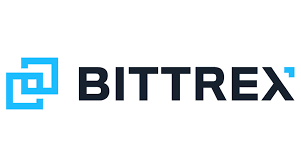SHA-3 is a member of the Keccak hashing algorithm group created by the National Institute of Standards and Technology (NIST). SHA-3 has attracted substantial interest and acceptance in both business and academics because of its strong architecture and resilience to numerous cryptographic threats. In this post, we’ll go over everything there is to learn about Secure Hash Algorithm 3, including its essential attributes, underlying concepts, and usage scenarios. We’ll look at how SHA-3 varies from its forerunner, SHA-2, and how it advances in the safety assurances it provides. Furthermore, we will look at the framework and techniques used by Secure Hash Algorithm 3, which will offer insight into its capacity to generate hash functions with various output sizes.

History of SHA-3
Concerns about the reliability of the existing SHA-2 family of compression functions prompted the demand for a new encrypted hash product. In 2007, NIST launched an open contest to find a new encryption algorithm that would be less vulnerable to assaults. The competition received numerous submissions, out of which Keccak emerged as the winner and was standardized as SHA-3 in 2015.
Design principles of SHA-3
Secure Hash Algorithm 3 follows a different design approach compared to its predecessor, SHA-2. It is based on the sponge construction, which allows for a flexible compression function design. The sponge construction absorbs the input data, squeezes it through a permutation function, and produces the hash output. This design enables it to be more resistant to various attacks, including collision and preimage attacks.
Hash function properties
Secure Hash Algorithm 3 is designed to have several important properties that make it suitable for various cryptographic applications. These properties include:
Collision resistance
Secure Hash Algorithm 3 is designed to make it computationally infeasible to find two different inputs that produce the same hash output. This property is crucial for ensuring the integrity of data and preventing unauthorized modifications.
Preimage resistance
It should make it computationally infeasible to find an input that produces a given hash output. This property ensures that the original input cannot be determined from its compression value, preserving the confidentiality of the data.
Performance and security
One of the most essential considerations in developing Secure Hash Algorithm 3 was establishing an equilibrium between quality and velocity. While SHA-3 is more secure than SHA-2, it does have certain speed drawbacks. SHA-3 has a higher computational cost due to the sponge construction and larger internal state size. However, as hardware and software optimizations improve, the efficiency gap between SHA-2 and SHA-3 is closing.
Applications of Secure Hash Algorithm 3
SHA-3 has several uses in cryptography protocols and systems. Among the most popular uses are:
Data integrity
It may be utilized to confirm the validity of data by contrasting the obtained hash code to the anticipated hashed value. Any modifications to the data will end up in a changed encryption value, suggesting manipulation.
Digital signatures
In digital signature algorithms, it is used to assure the reliability and accuracy of verified messages. Before executing, a compression algorithm is applied to the content, and the resultant hash value is utilized in the signature creation process.
Password storage
By encrypting keys before saving them in a file, Secure Hash Algorithm 3 may be utilized for safely storing them. This guarantees that the initial credentials cannot be easily recovered even if the information system is hacked.
Key derivation
From a particular input, SHA-3 may be used to generate cryptographic keys. This is important in a variety of cryptographic methods that require a safe key for encoding or verification.
Conclusion
SHA-3, which relies on the Keccak encryption system, is a significant advancement in cybersecurity. It is a crucial tool for safeguarding data quality, confidentiality, and validity due to its design regulations, attributes, and applications. While SHA-2 is still extensively used, Secure Hash Algorithm 3 popularity is rising as the performance and security improvements become more evident. As technology advances, it is critical to keep current on the most recent advances in cryptographic hash functions to protect the security of electronic systems and data.
You can also find these articles helpful
6 Popular Cryptocurrency Mining Algorithms You Should Know
Everything You Need to Know About The GOST Hash Function
Ethereum 2.0











